Abstract
Two-dimensional echocardiography was performed in two cases of distal type aorticopulmonary window. The defect of the aorticopulmonary septum could be visualised in both cases in transverse section of the great arteries using our method. We make it a rule to study three different levels of section: plane 1, where the echo of the semilunar valve of the posterior great artery is well seen; plane 2, where the echo of the semilunar valve of the anterior great artery is clearly observed; and plane 3, where neither semilunar valve is seen. The aorticopulmonary septal defects were recognised at the level of plane 2 to plane 3 in our two cases. Two-dimensional contrast echocardiography was performed in one of the cases. The contrast entered the ascending aorta from the main pulmonary artery through the aorticopulmonary septal defect in early systole. Postoperatively, no defects were detected in the aorticopulmonary septum in either case using the same approach, and no passage of contrast into the ascending aorta from the pulmonary artery was noted in the case where contrast was injected. Accurate diagnosis of this anomaly can be made by visualisation of the defect utilising two-dimensional echocardiography. Typing of this anomaly, proximal, distal, or combined may be possible with our new approach.
Full text
PDF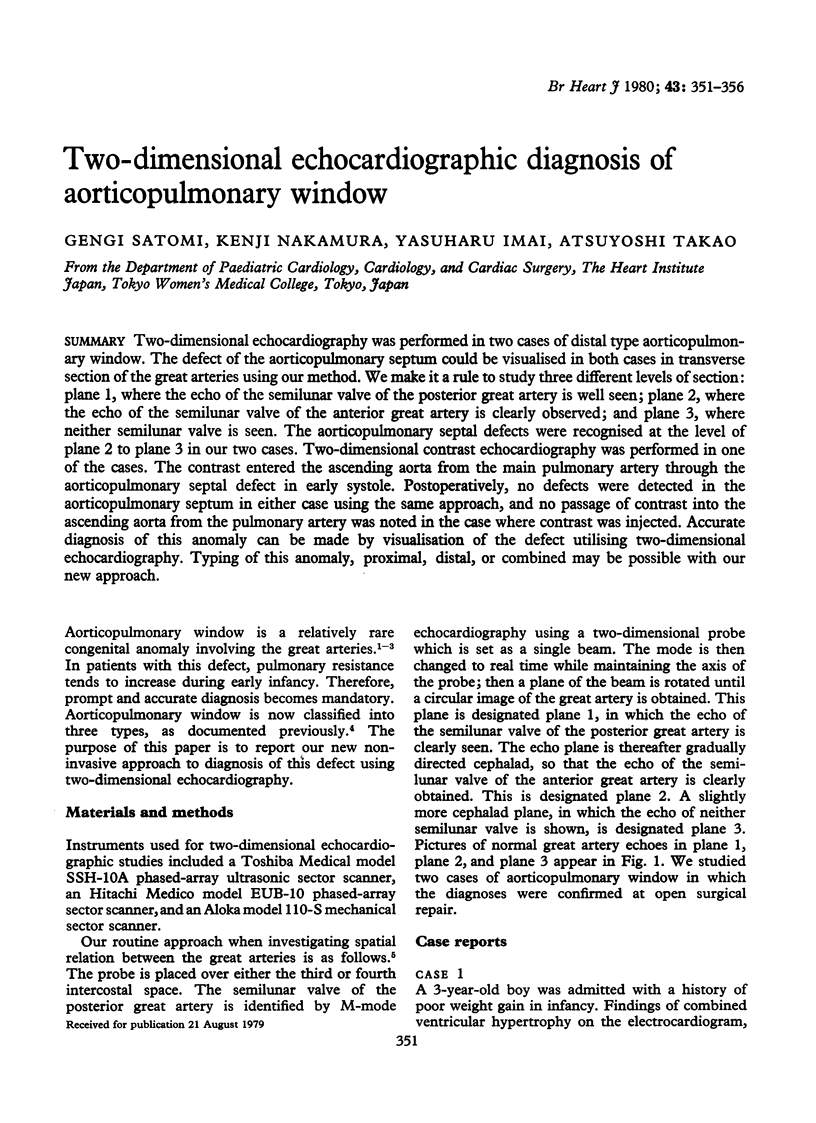
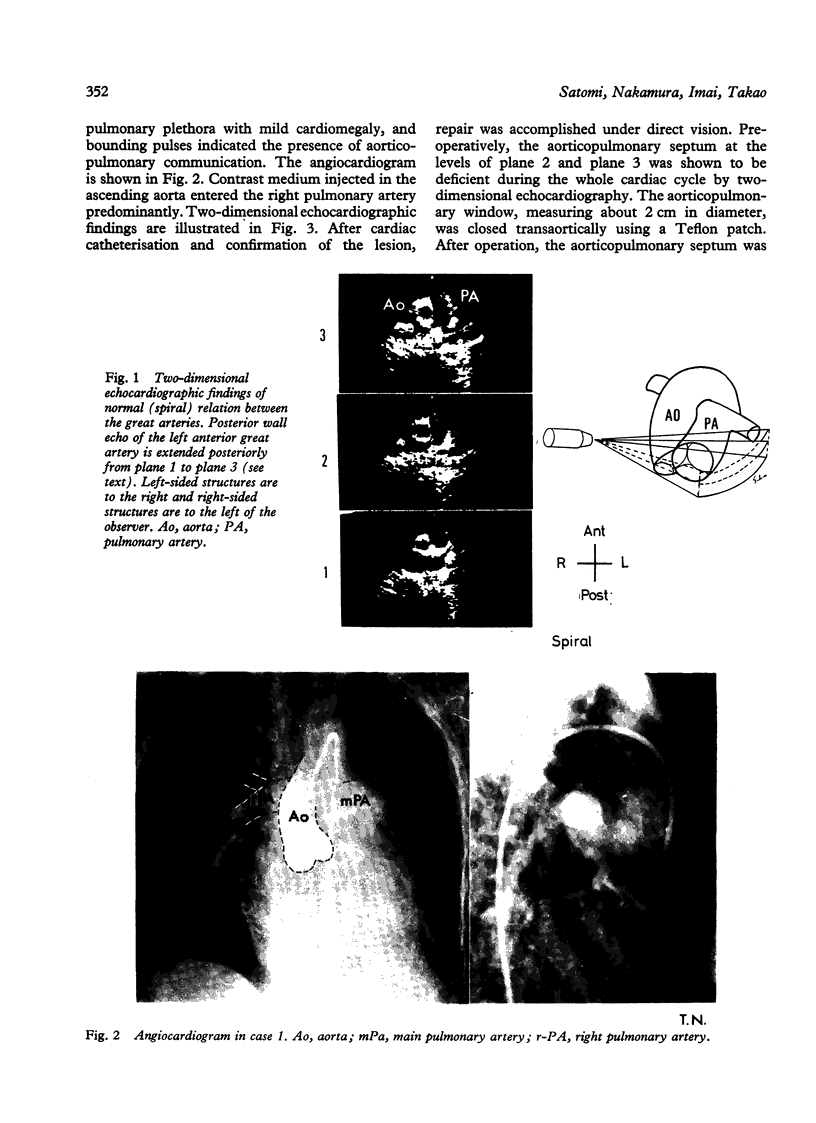
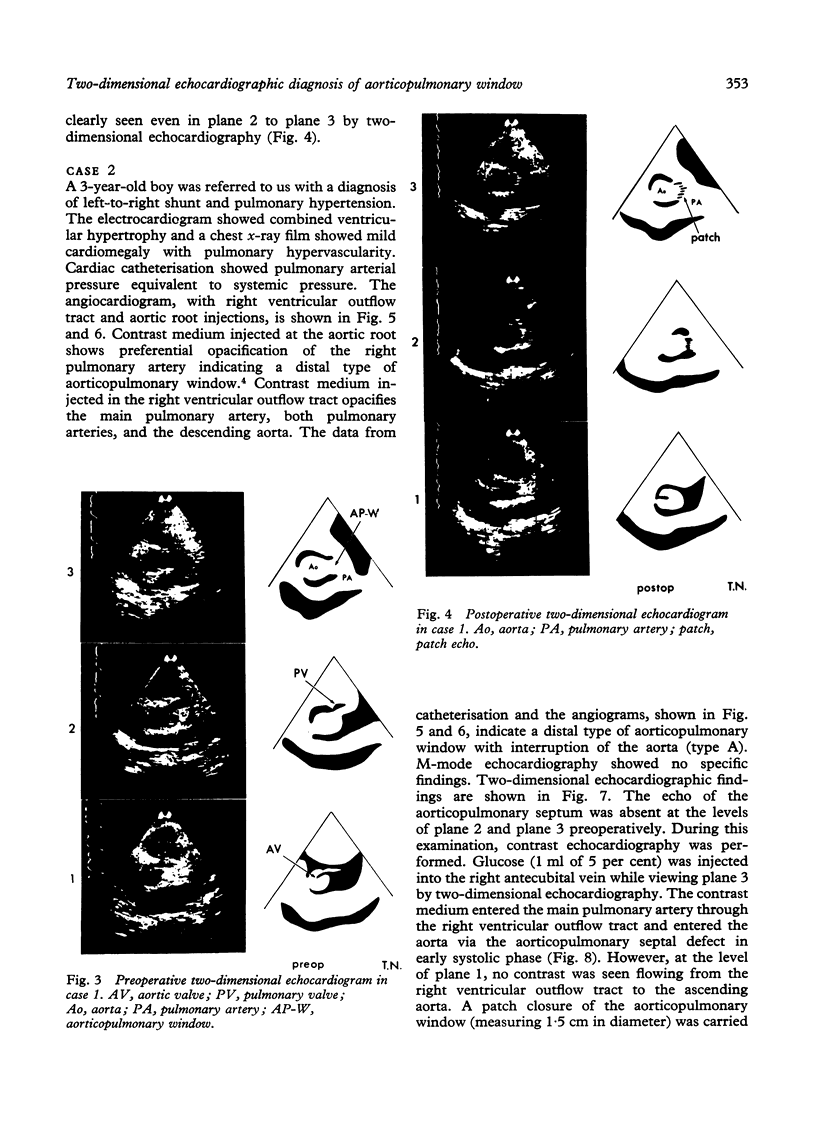
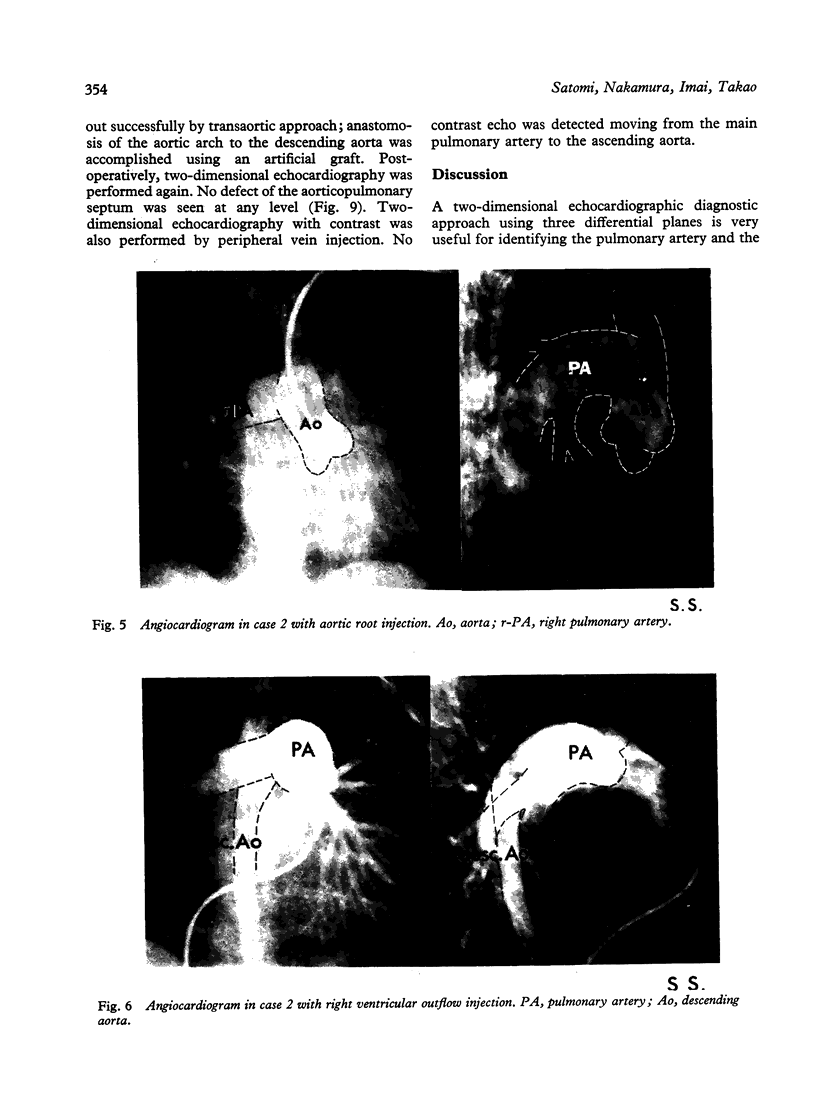
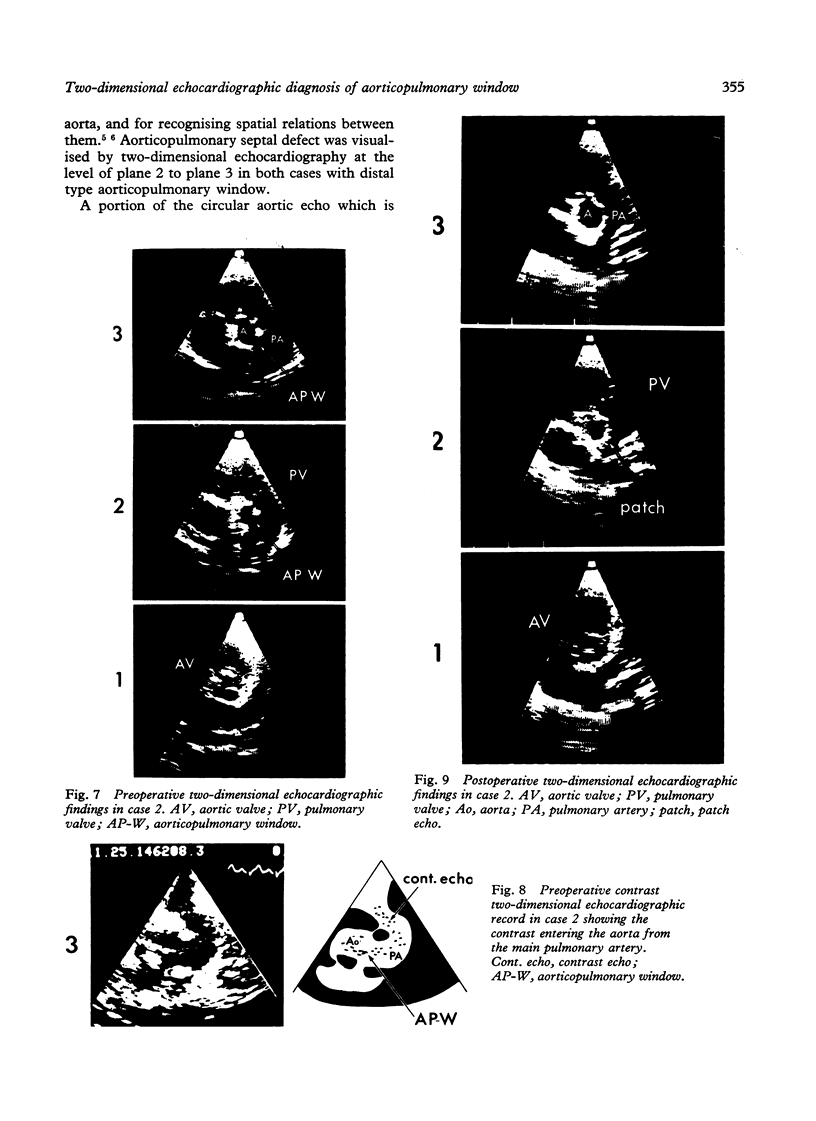
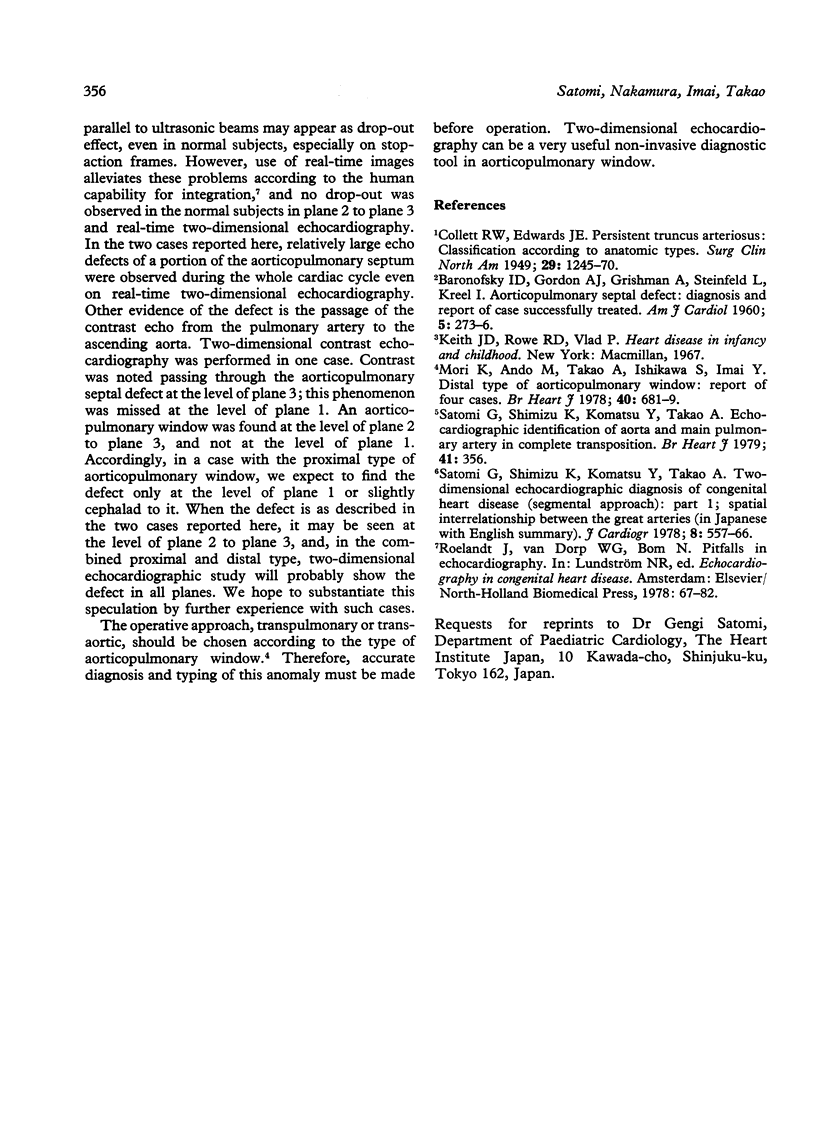
Images in this article
Selected References
These references are in PubMed. This may not be the complete list of references from this article.
- BARONOFSKY I. D., GORDON A. J., GRISHMAN A., STEINFELD L., KREEL I. Aorticopulmonary septal defect; diagnosis and report of case successfully treated. Am J Cardiol. 1960 Feb;5:273–276. doi: 10.1016/0002-9149(60)90209-5. [DOI] [PubMed] [Google Scholar]
- Satomi G., Shimizu K., Komatsu Y., Takao A. Echocardiographic identification of aorta and main pulmonary artery in complete transposition. Br Heart J. 1979 Mar;41(3):356–358. doi: 10.1136/hrt.41.3.356. [DOI] [PMC free article] [PubMed] [Google Scholar]





